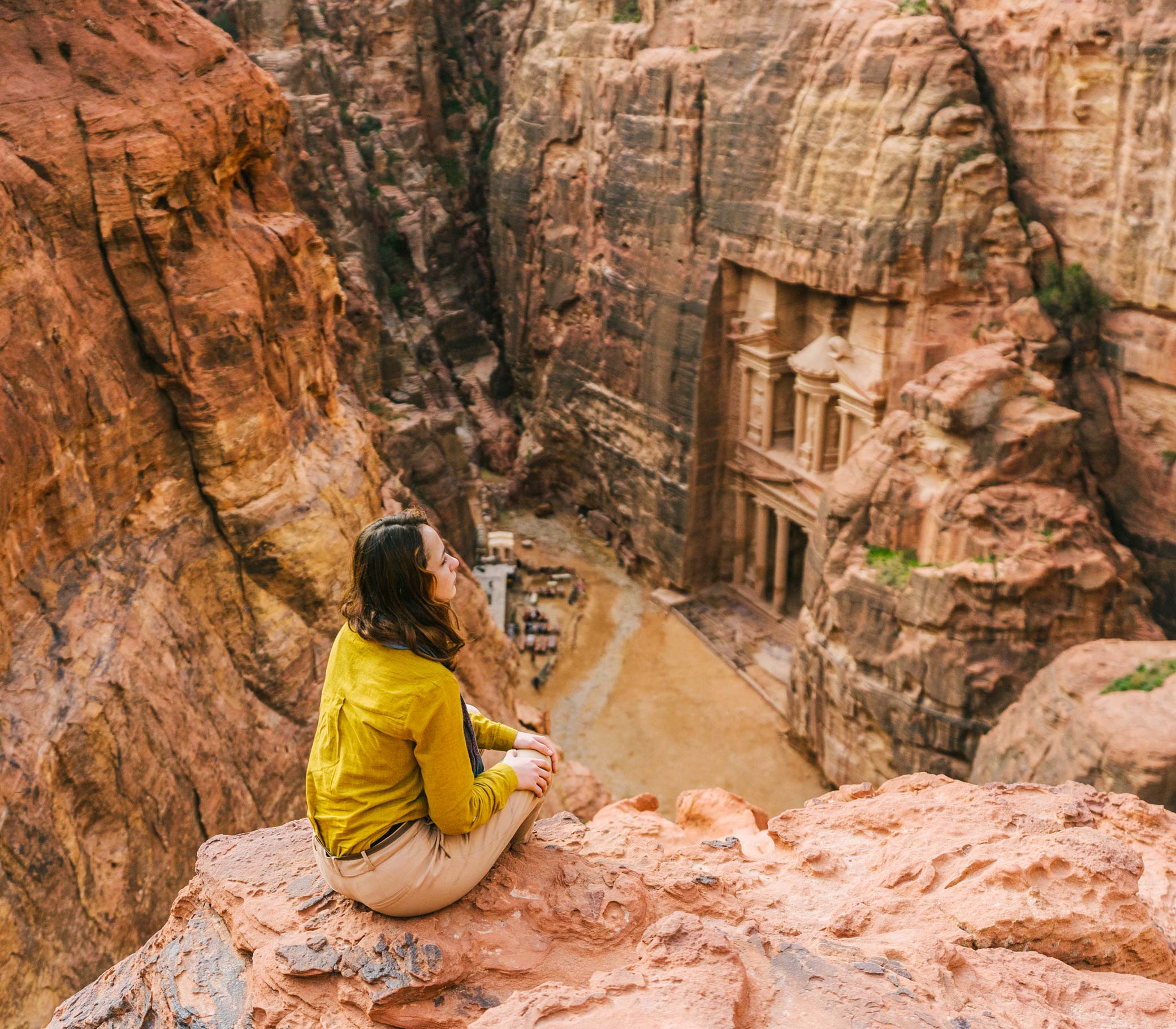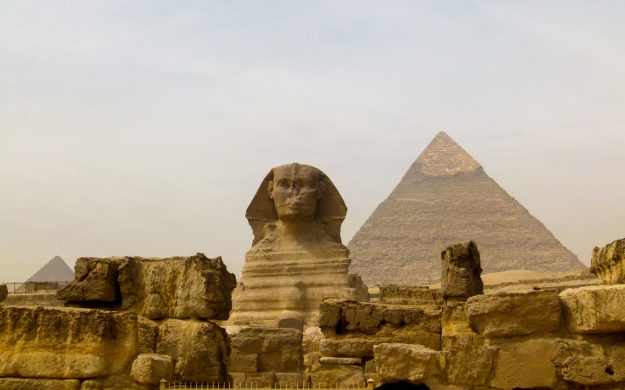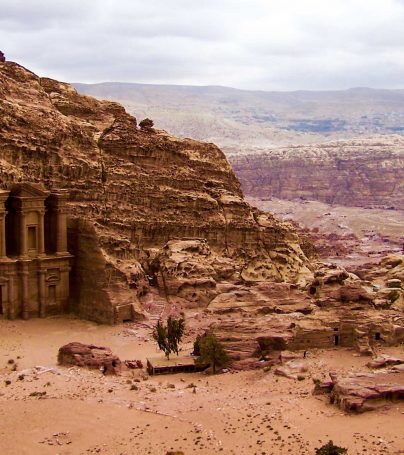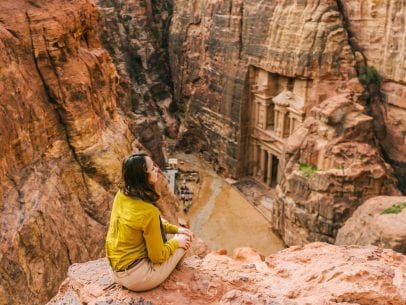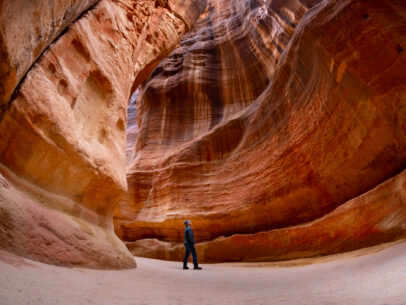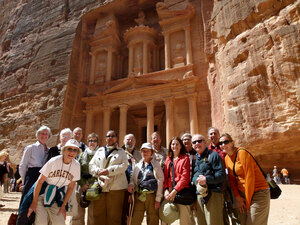Petra Adventure Tours
Petra (Greek “πέτρα” (petra), meaning stone; Arabic: البتراء, Al-Batrāʾ) is a historical and archaeological city in the Jordanian governorate of Ma’an that is famous for its rock cut architecture and water conduit system. Established sometime around the 6th century BC as the capital city of the Nabataeans, it is a symbol of Jordan as well as its most visited tourist attraction. It lies on the slope of Mount Hor in a basin among the mountains which form the eastern flank of Arabah (Wadi Araba), the large valley running from the Dead Sea to the Gulf of Aqaba. Petra has been a UNESCO World Heritage Site since 1985. The site remained unknown to the Western world until 1812, when it was introduced by Swiss explorer Johann Ludwig Burckhardt. It was described as “a rose-red city half as old as time” in a Newdigate Prize-winning poem by John William Burgon. UNESCO has described it as “one of the most precious cultural properties of man’s cultural heritage”. Petra was chosen by the Smithsonian Magazine as one of the “28 Places to See Before You Die.”
Evidence suggests that settlements had begun in and around Petra in the eighteenth dynasty of Egypt (1550-1292 BC). It is listed in Egyptian campaign accounts and the Amarna letters as Pel, Sela or Seir. Though the city was founded relatively late, a sanctuary existed there since very ancient times. Stations 19 through 26 of the stations list of Exodus are places associated with Petra. This part of the country was Biblically assigned to the Horites, the predecessors of the Edomites. The habits of the original natives may have influenced the Nabataean custom of burying the dead and offering worship in half-excavated caves. Although Petra is usually identified with Sela which means a rock, the Biblical references refer to it as “the cleft in the rock”, referring to its entrance. The second book of Kings xiv. 7 seems to be more specific. In the parallel passage, however, Sela is understood to mean simply “the rock”.
More satisfactory evidence of the date of the earliest Nabataean settlement may be obtained from an examination of the tombs. Two types have been distinguished: the Nabataean and the Greco-Roman. The Nabataean type starts from the simple pylon-tomb with a door set in a tower crowned by a parapet ornament, in imitation of the front of a dwelling-house. Then, after passing through various stages, the full Nabataean type is reached, retaining all the native features and at the same time exhibiting characteristics which are partly Egyptian and partly Greek. Of this type there exist close parallels in the tomb-towers at el-I~ejr in north Arabia, which bear long Nabataean inscriptions and supply a date for the corresponding monuments at Petra. Then comes a series of tombfronts which terminate in a semicircular arch, a feature derived from north Syria. Finally come the elaborate façades copied from the front of a Roman temple; however, all traces of native style have vanished. The exact dates of the stages in this development cannot be fixed. Few inscriptions of any length have been found at Petra, perhaps because they have perished with the stucco or cement which was used upon many of the buildings. The simple pylon-tombs which belong to the pre-Hellenic age serve as evidence for the earliest period. It is not known how far back in this stage the Nabataean settlement goes, but it does not go back farther than the 6th century BC.
A period follows in which the dominant civilization combines Greek, Egyptian and Syrian elements, clearly pointing to the age of the Ptolemies. Towards the close of the 2nd century BC, when the Ptolemaic and Seleucid kingdoms were equally depressed, the Nabataean kingdom came to the front. Under Aretas III Philhellene, (c.85–60 BC), the royal coins begin. The theatre was probably excavated at that time, and Petra must have assumed the aspect of a Hellenistic city. In the reign of Aretas IV Philopatris, (9 BC–40 AD), the fine tombs of the el-I~ejr type may be dated, and perhaps also the great High-place.
In 106 AD, when Cornelius Palma was governor of Syria, that part of Arabia under the rule of Petra was absorbed into the Roman Empire as part of Arabia Petraea, becoming capital. The native dynasty came to an end, but the city continued to flourish. It was around this time that the Petra Roman Road was built. A century later, in the time of Alexander Severus, when the city was at the height of its splendor, the issue of coinage comes to an end. There is no more building of sumptuous tombs, owing apparently to some sudden catastrophe, such as an invasion by the neo-Persian power under the Sassanid Empire. Meanwhile, as Palmyra (fl. 130–270) grew in importance and attracted the Arabian trade away from Petra, the latter declined. It seems, however, to have lingered on as a religious centre. A Roman road was constructed at the site. Epiphanius of Salamis (c.315–403) writes that in his time a feast was held there on December 25 in honor of the virgin Khaabou (Chaabou) and her offspring Dushara (Haer. 51).
Petra declined rapidly under Roman rule, in large part from the revision of sea-based trade routes. In 363 an earthquake destroyed many buildings, and crippled the vital water management system. The ruins of Petra were an object of curiosity in the Middle Ages and were visited by Sultan Baibars of Egypt towards the end of the 13th century. The first European to describe them was Swiss traveller Johann Ludwig Burckhardt in 1812.
Because the structures weakened with age, many of the tombs became vulnerable to thieves, and many treasures were stolen. In 1929, a four-person team, consisting of British archaeologists Agnes Conway and George Horsfield, Palestinian physician and folk-lore expert Dr Tawfiq Canaan and Dr Ditlef Nielsen, a Danish scholar, excavated and surveyed Petra.
Customize Your Dream Adventure
We are here to help craft tailor-made adventures for individuals, couples, families, and groups of explorers.
